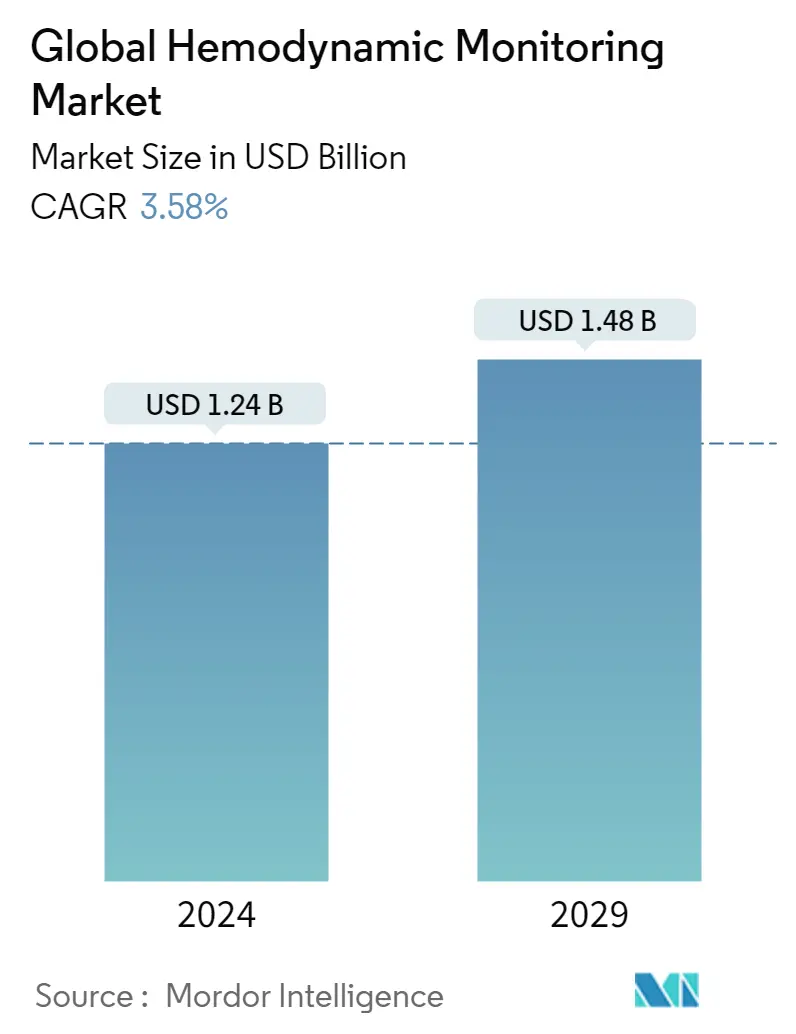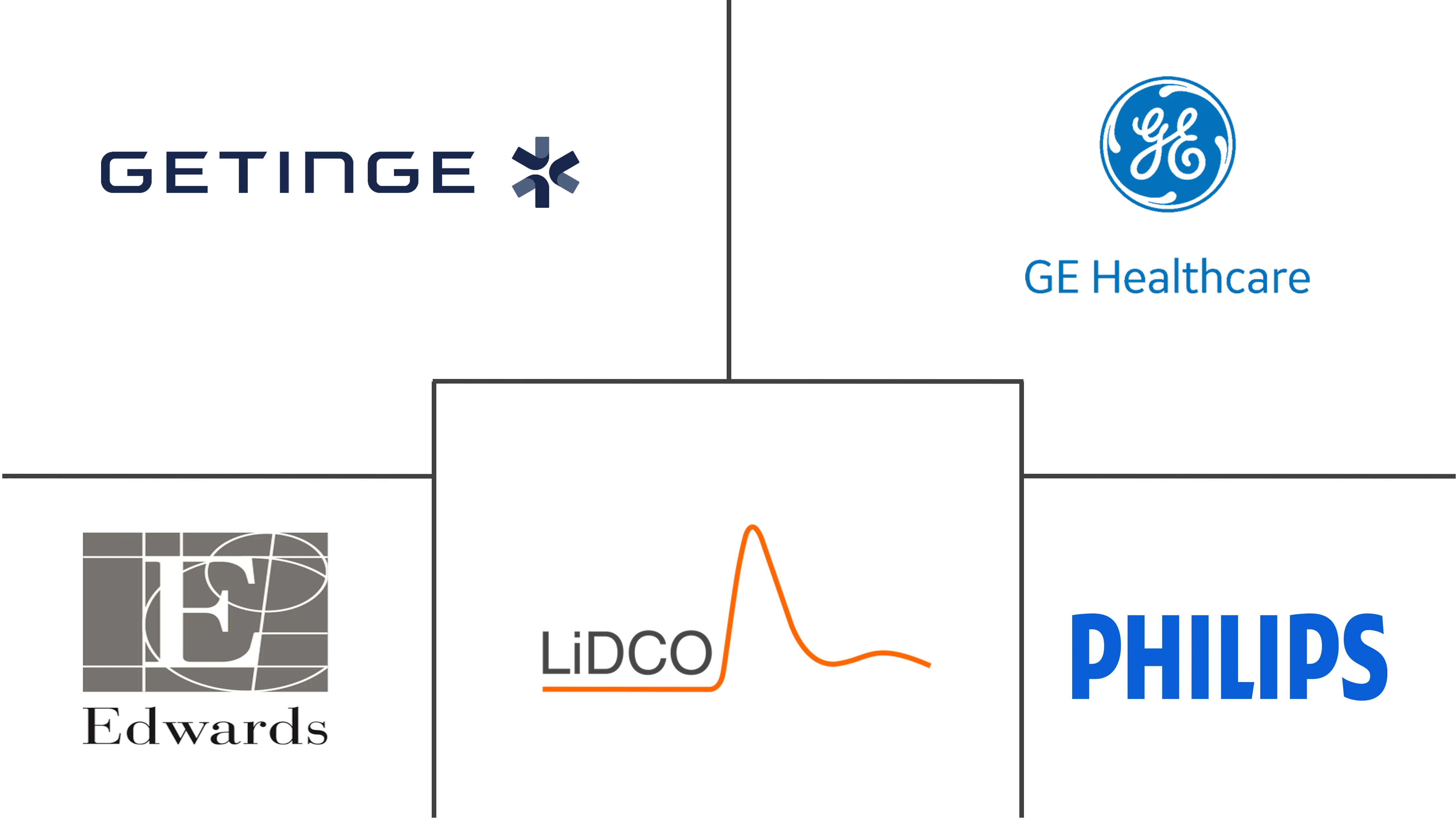Market Size of Global Hemodynamic Monitoring Industry

| Study Period | 2019 - 2029 |
| Market Size (2024) | USD 1.24 Billion |
| Market Size (2029) | USD 1.48 Billion |
| CAGR (2024 - 2029) | 3.58 % |
| Fastest Growing Market | Asia Pacific |
| Largest Market | North America |
Major Players
*Disclaimer: Major Players sorted in no particular order |
Need a report that reflects how COVID-19 has impacted this market and its growth?
Hemodynamic Monitoring Devices Market Analysis
The Global Hemodynamic Monitoring Market size is estimated at USD 1.24 billion in 2024, and is expected to reach USD 1.48 billion by 2029, growing at a CAGR of 3.58% during the forecast period (2024-2029).
COVID-19 has a substantial market impact. According to the LiDCO Group PLC's annual report for 2020, demand for hemodynamic monitoring equipment has increased from many existing customers, with significant short-term heightened demand from UK hospitals and increased demand in several other countries, including a small number of monitors sold in Wuhan, China. Furthermore, some COVID-19 patients develop complications such as sepsis and require intensive care, and there is strong clinical evidence that using advanced hemodynamic monitoring improves patient outcomes. Hence, this is also likely to create more demand for the products till the pandemic ends.
The key factors propelling the growth of this market are an increase in the number of critically ill geriatric cases, a rise in the prevalence of cardiac disorders and diabetes, increasing demand for home-based and non-invasive monitoring systems, and an increase in the number of people suffering from hypertension. As per the World Health Organization's Fact of 2021, an estimated 1.28 billion adults aged 30-79 years worldwide have hypertension. As per the same source, Cardiovascular diseases (CVDs) are the leading cause of death globally, taking an estimated 17.9 million lives each year, an estimated 32% of all the deaths worldwide. Hence the prevalence of cardiac disorders and hypertension will likely boost the market growth.
New techniques of hemodynamic monitoring have the potential to advance the management of the cardiovascular patient during postoperative care and anesthesia as they provide accurate and repeatable measurements that can be used to detect hemodynamic alterations and their causes, optimize hemodynamic conditions such as oxygen delivery to the tissues, and provide feedback on the adequacy of therapeutic interventions. The transition from static to dynamic variables to assess requirements such as cardiac preload and fluid responsiveness, as well as the change to less invasive or noninvasive monitoring techniques, are also driving the market growth.
Thus, the market is expected to show growth over the forecast period. However, Increasing incidences of complications associated with an invasive monitoring system and stringent FDA guidelines for approval of new systems may hinder the growth of the market.
